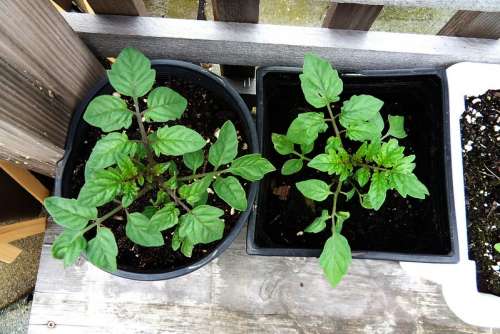Yes, wood ash is safe to use on tomatoes. Tomatoes are by far the most commonly grown vegetable in gardening. Tomatoes are grown for their taste and to enjoy gardening. Some even participate in competitions and take pride in a bountiful harvest.
Is wood ash good for tomato plants?
Wood Ashes are a good option for the tomato plant since they promote fertility. Wood ash is high in potassium, often known as potash, which is an important mineral for plants. Ash may be seen as a leftover of burned material, and as the ash looks useless.
In reality, plants can benefit from using ash as they like potassium, which can be found in wood ashes. You have the option of composting it first or spreading it around the bottom of the tomato plant. Therefore, the ideal way to feed wood ashes to tomatoes is to make ‘tea’ for the plants.
Wood ash is a relatively strong tomato fertilizer, significantly increasing growth of the tomato plant and tomato output compared to untreated plants and nearly able to keep up with traditional fertilizer.
The most essential thing to remember about this is that ‘wood-ash’ must be handled carefully.
Never use hot wood ash in the plant since it is hazardous to your fragile plants and might spark a fire. As a result, always set aside to cool appropriately before using it. And, of course, while working with wood ash, you should always use some form of protection.
Also Read: How to Use Banana Peels for Cucumber Plants?
Uses of Wood Ash in Your Tomato Garden

You can easily use wood ashes to enrich plant-soil if you have a fireplace or woodstove! Wood ash is rich in nutrients and phosphorus, making it ideal for use in the vegetable garden. But it’s also crucial to know the helpful uses of wood ash.
Fertilizers
Wood ash has a variety of nutrients that the tomatoes will indeed be ready to extract. The amounts of these nutrients can fluctuate depending on whether you burn hardwood or softwood. Some claim that hardwood contains more minerals than softwood.
Whatever you use, it will most likely be high in nutrients and minerals such as potassium, magnesium, and calcium.
Calcium is not just used to maintain your tomatoes healthy, but it also eliminates blossom end rot.
Potassium is considerably more important. This vitamin boosts yield, which is always an advantage. Potassium is more important than calcium in the overall well-being of the tomato. Low potassium levels in your soil cause Blotchy ripening of tomatoes and an increased risk of yellow patches.
Magnesium is another essential mineral for maintaining tomato plant leaves robust and green so they can continue to absorb sunlight. Yellowed, curled leaves are generally an indication that your soil is deficient in magnesium.
Adding wood ash to your tomatoes improves your chances of having healthy tomato plants. It helps to enhance the size and quantity of the plant.
A study states that, adding wood ash for tomato plant will help to increase the yield, fruit size and overall health of the plant.
Also Read: How Often to Water Green Onions?
Compost Heap with Wood Ash
Since wood ash is alkaline, it may aid in reducing the acidity of a compost heap. This optimizes the environment of composting worms and produces compost that is ideal for mulching around veggies.
Add a single layer of wood ash to the compost heap, once in a week and should be used only every six inches.
Always add cooled and dry ash into the heap, along with all the other essential ingredients.
For active or heated compost heaps, once a month is advised in summer or spring. But the ash and debris to cold or infrequently used compost piles.
Wood Ash for Soil pH
Tomatoes are some of the plants which need nutrients frequently to grow properly. And they are also the plants that are sensitive about their soil requirements. Not only that, but pH is a soil condition equally as significant as nutrient richness.
Tomatoes prefer acidic soil with a pH of less than 7. Too alkaline or acidic soil has a harmful impact on nutrient levels. If you see that the tomato appears Blotchy, check the pH of the soil. If it’s less than 6, your soil has become too acidic for the tomatoes to excel.
Most veggies need a pH range of 6.5 to 7.0. If the pH of your soil is less than 6.5, forks or rake wood ash to help boost it. To determine the pH of your soil, use an affordable test kit.
In terms of acid neutralization, wood ash is roughly half as efficient as lime. As a rule of thumb, spread about two ounces of ash per square yard. Wear gloves to protect your hands and do this on a calm winter day.
Root vegetables, such as cabbage and Brussels sprouts, grow in acidic soils. Apply wood ash before seeding in the winter or in actively developing plants.
Because wood ash is strong in potassium, which promotes blooming and fruiting, it’s perfect for usage around most fruit trees and fruiting veggies like tomatoes.
Take precautions when applying wood ash near plants that demand acidic soil, such as blueberries. It should not come into contact with seedlings or be used on potato beds since alkaline soil promotes potato scab.
To turn the soil sufficiently acidic for most other crops, you’d need to use a lot of wood ash, but it really is worth re-testing the soil’s pH every two years to ensure it doesn’t go beyond 7.5.
Repellent for Pests
If bugs and a few other insects bother you, you’re in luck. Wood ash is quite effective in repelling these nasty bugs. Snails, slugs, or a few soft-bodied insects, such as aphids, are repelled by the salt in the ash.
Unfortunately, the repellent characteristic of wood ash is rendered obsolete once wet. Later in the day, sprinkle your dry, cold wood ash all around the base of your plants. To avoid any undesirable harm, avoid getting the ashes on the stems and leaves of the tomato plant. However, the repellent characteristic of wood ash is rendered useless when wet.
Mulching
You may want to keep your soils wet, particularly during dry seasons. The most efficient method is mulching because it allows for the gentle release of nutrients into the soil and the avoidance of moisture evaporation surrounding the plants.
You can safely use wood ash to cover your garden plants and fruit trees. However, avoid applying ash on plants that thrive in acidic soil, such as raspberries and blueberries.
Inhibit weed growth
Wood ashes can also be used to inhibit weed plant growth. Wood ashes have been found to be effective in promoting plant development.
Still, they can be used to eradicate one of the plant’s biggest enemies: weeds, which take the nutrients and minerals which you spread in the garden in the form of fertilizers, and because of this the tomato plant will be unable to take the proper minerals and nutrients causing the tomato plant to become blotchy. It has been found that excessive wood ash elevates the pH of the soil, making it even more alkaline.
However, if you use too much wood ash to kill weeds, you may end up with a barren garden; hence, use wood ash with precaution. To use wood ash to kill weeds, spread a thick layer of ash to the sections of the garden where you want to inhibit weed growth, but just don’t mix it in.It is a highly effective method of using wood ash. However, just a small amount should be used.
How to Prepare the Soil for Tomato Plants?
Dig compost or manure thoroughly into the beds of soil to prepare the garden for tomatoes. When replenishing soil in the spring, apply old or composted manure.
Do this in a three-foot-diameter-by-two-foot-deep area, keeping in mind that roots will spread out and down.
How do you add nutrients to the soil before planting tomatoes?
Compost and green manure are helpful to add nutrients for tomatoes and many other plants. Compost improves soil fertility and adds basic nutrients. All year round, composted manure offers nutrients and the manure that has been composted also helps plants in getting nutrients throughout the growing season.
Tips for Using Wood Ash for Tomatoes
Safety concerns
Since wood ashes are alkaline and have a high pH value, you should use protective eyewear, gloves, and a face shield. Avoid spreading them in the wind as well.
Using only wood ash
Always make sure to not use ash from the combustion of rubber, cardboard, coals, or painted or colored wood. These materials may contain hazardous compounds.
Do not use wood ash during seeding
Try not to use wood ash during the seeding process as wood ash contains too many salts, affecting the growth of plants.
Appropriate application
The maximum recommended application is 3 pounds per 100 square feet of the soil surface in a single season.
Homemade fertilizer for tomatoes
Five pounds of ashes should be placed in a breathable fabric or jute bag, tied securely, and soaked in 200-litre water.
Allow it to settle for four days before pouring a cupful over the tomato plants. Use this once a week until they begin to blossom.
Storing Wood Ash
To minimize nutrient loss, wood ashes that are not immediately applied to your plants should be kept in a dry place. Ashes placed outside lose most of their potassium in a year due to rain leaching.
Ripen on the vine
Tomatoes can ripen if harvested after they begin to turn pink. They can taste nearly as nice if taken early and placed inside to mature as if they had ripened on the vine. However, the temperature is essential. Tomatoes taste best if harvested early and matured at room temp when outside night temperatures drop below 60o F in late summer and autumn. They do not have to be placed on a window ledge.
Proper site
Tomatoes need a lot of sunlight. Thus they need to be in direct sunlight for at least 6 to 8 hours of direct sunshine. You may plant them in partial shade, but the yields and taste will not be as good as other tomatoes.
Conclusion
Can I use wood ash for tomato plants? Yes, potassium or potash present in wood ash will benefit tomato crop to increase the yield and size of tomatoes.
